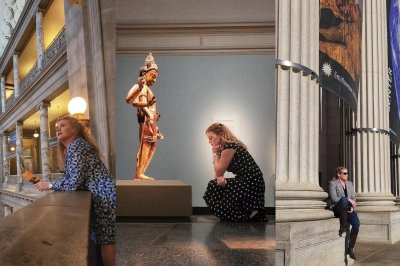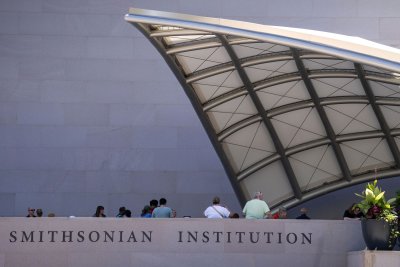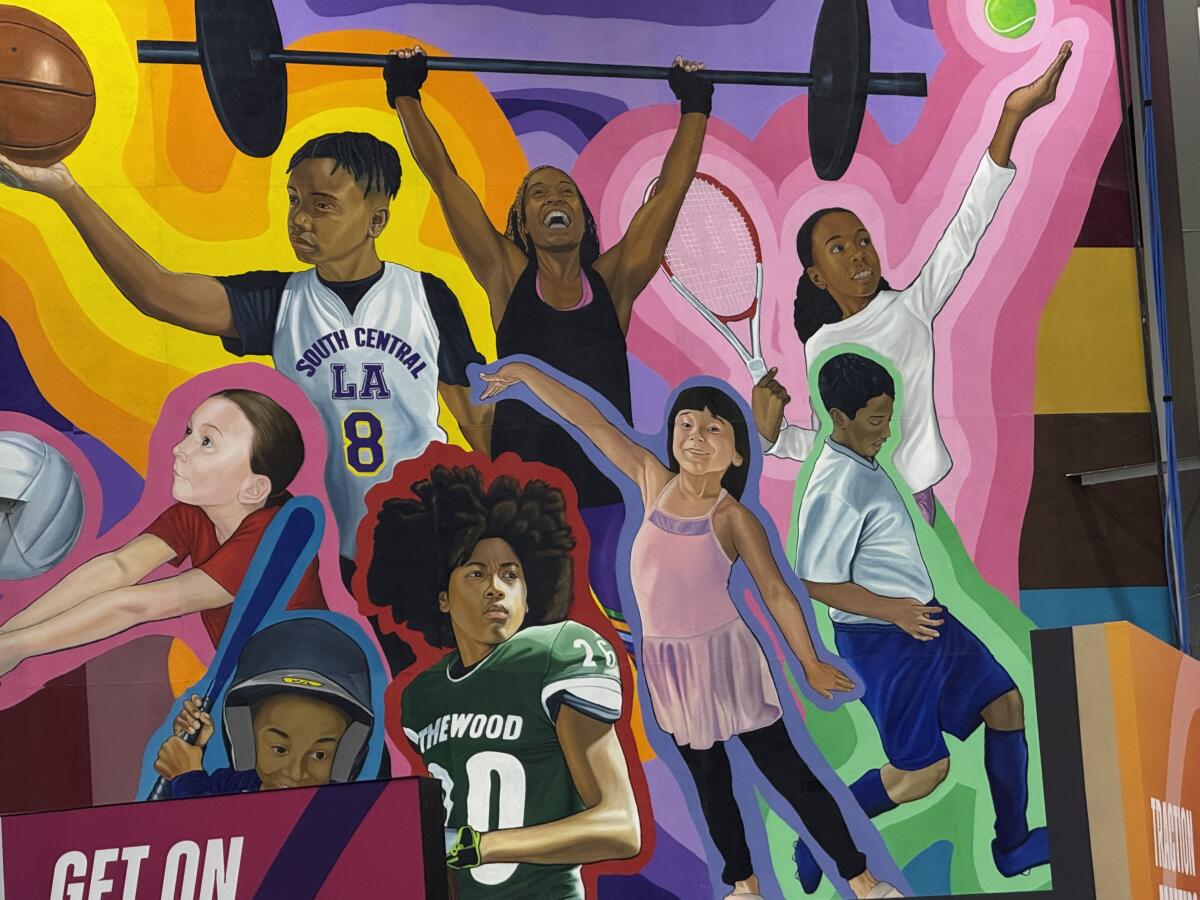112 exhibits and counting — a woman pursues the Smithsonian treasures

Kathryn Jones visits the National Museum of Natural History (L and R) and the National Museum of Asian Art (C), both part of the Smithsonian complex in Washington, D.C. Photos by Kathryn Jones
WASHINGTON, Oct. 21 (UPI) — When Kathryn Jones began to visit Washington’s museums in January, she didn’t plan to make it her full-time pursuit. But after 112 exhibits and hundreds of hours spent inside the Smithsonian’s galleries, she discovered the miracle of the exhibits’ free access.
Somewhere between the Smithsonian American History Museum’s “America on the Move” display and the Postal Museum’s overlooked treasures, Jones found herself on a journey to read every sign and description at every museum as she took in the exhibits.
Jones’ quest reshaped her understanding of curiosity and the quiet power of public learning. “I think the more that we know, the more stories we hear, the better we can empathize with other people and problem-solve ourselves,” she said.
Now, as the doors to the Smithsonian museums remain closed amid the government shutdown, Jones and others like her are left waiting outside, reminded of what the city, and the nation, loses when history is temporarily out of reach.
Jones, a 33-year-old marketing and project management professional, started at Washington’s museums in January as a personal challenge during a career break, but that quickly turned into an ambitious exploration of the Smithsonian Institution.
“I had taken the time off just to kind of figure out what brought me joy, and I really need structure to function,” said Jones, who once served in the Peace Corps in Ukraine.
The Smithsonian is the world’s largest museum complex, encompassing 21 museums, galleries, gardens and the National Zoo. With all Smithsonian museums free in the District of Columbia — and clustered within a short walk of each other along or near the National Mall — they offer the public access to an extraordinary range of art, science and history.
“I don’t know of anywhere else in the world that there is that large of a concentration of museums that are free,” Jones said.
Since she began her journey, Jones has explored 112 exhibits — individual displays within museums that organize artifacts, stories and multimedia around a shared theme. The longest for Jones, at nearly three hours, was the “America on the Move” exhibit at the National Museum of American History.
“The more that I visit museums, the more I realize just how everything is connected,” Jones said, noting how a single object might weave through several branches of history.
For example, she told UPI the story of the Hope Diamond. It was donated by Harry Winston, the “King of Diamonds,” in 1958 to display at the Natural History Museum with French Crown Jewels. The diamond’s original mailing package is preserved across town at the Postal Museum, which still serves as a working post office.
She pointed out that the Southern Railway No. 1401 steam locomotive at the American History Museum was built directly into the museum and still rests on its tracks due to its large size. It played a ceremonial role in transporting President Franklin D. Roosevelt’s funeral train in 1945.
At the Postal Museum, she was struck by letters and a mailbox preserved from the 2001 anthrax attacks. The bacterium was sent to media figures in Washington, New York, Florida and elsewhere, and five people died.
In the historic building that houses both the American Art Museum and the National Portrait Gallery, she discovered that the top floor once displayed patent models when the space served as the U.S. Patent Office.
Jones also said she loved the hidden connections within the Smithsonian. For example, the Asian Art and African Art museums are linked by underground tunnels, where a sprawling mural leads visitors through time.
The “very bottom level is a trick of the eye mural that takes visitors from ancient times to the first national museum, which is now the arts and industry building,” Jones explained.
For Jones, these connections reveal how different disciplines and stories echo across time.
To many visitors, the Smithsonian’s free admission policy is central to what makes it extraordinary. Funded largely through federal support and philanthropy, the system embodies a belief that education, history and art should be available to all.
Residents like Jones find this accessibility turned Washington into a living classroom, where anyone can walk from the National Air and Space Museum to the African American History and Culture Museum to encounter entire worlds of knowledge in an afternoon.
Now, with the museums temporarily closed, Jones and other enthusiasts find themselves at a loss. The silence of shuttered halls underscores what the city loses when its cultural core is inaccessible — not just a tourist attraction — but a shared public good.
The closures have prompted Jones to adapt her quest. She’s turned her attention to outdoor installations and plaques, such as outside the Natural History Museum. Even so, she misses the rhythm of discovery that came from stepping into each gallery and losing herself among artifacts and stories.
She said she sees her museum project not just as a pastime, but as a quiet form of public advocacy. She has documented her journey through the exhibits on Instagram and Tik Tok, which can be found @digitaldocent_ and @digitaldocent, respectively.
“I wanted to share the kind of information that would make someone feel more comfortable trying something they might otherwise not know a bunch about,” Jones said.
Her work online, she reported, has inspired others to see museums as approachable spaces rather than academic ones, and that these stories are often hopeful and helped her worldview become even more open-minded.
“For me, they make me feel small, but like, in a good way. They kind of remind me I’m part of something bigger, and it’s going to be fine, even though it is so chaotic right now,” she said.
As she waits for the museums to reopen, Jones’ mantra remains the same: “My goal is to make curiosity my routine.”



